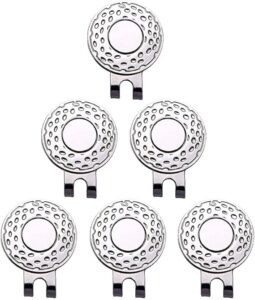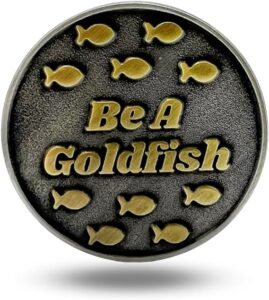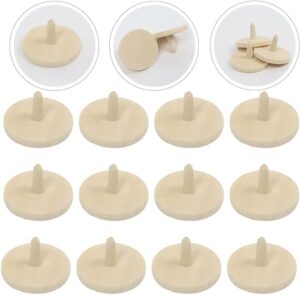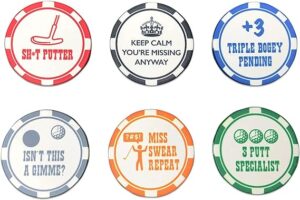Golf is a game of precision, and every golfer knows that attention to detail is crucial. One such detail that often goes overlooked but is essential for every golfer is the golf ball marker. In this comprehensive guide, we will delve into the world of golf ball markers, exploring their significance, types, and how to choose the perfect one for your game.
Table of Contents
Introduction
The Importance of Golf Ball Markers
Golf is a game of precision and etiquette, and one of the key elements of proper golf etiquette is marking your golf ball. Golf ball markers are small, unassuming tools that serve a significant purpose on the course. They allow golfers to lift and clean their balls, ensuring accurate placement when putting and avoiding interference with other players’ putts. In this article, we will explore everything you need to know about golf ball markers, from the different types available to how to use them effectively.
Types of Golf Ball Markers
Golf ball markers come in various forms to cater to different preferences and needs. Let’s examine the most typical types in more detail:
Traditional Ball Markers
Traditional ball markers are typically small, flat discs made from metal, plastic, or wood. They are straightforward and functional, often featuring a simple design or a golf course logo. These markers are favored by golfers who prefer a classic and no-nonsense approach to the game.

Magnetic Ball Markers
Magnetic ball markers have gained popularity for their convenience. They have a magnetic bottom that adheres to the ball’s surface, eliminating the risk of misplacement. Magnetic markers often come with a detachable hat clip or divot repair tool, making them a multifunctional accessory.

Personalized Ball Markers
Personalized ball markers allow golfers to add a personal touch to their game. You can customize them with your initials, a favorite symbol, or even a family crest. These markers make for excellent gifts and can be a conversation starter on the course.
Materials and Durability
The material of your golf ball marker can affect its durability and aesthetics. Here are the common materials used:
Metal Markers
Metal markers are sturdy and long-lasting. They come in various finishes, including polished chrome, antique brass, and stainless steel. Metal markers often have an elegant and timeless appeal.

Plastic Markers
Plastic markers are lightweight and affordable. They are available in a wide range of colors and designs. While they may not be as durable as metal markers, they are a practical choice for many golfers.

Wooden Markers
Wooden markers exude a rustic charm. They can have elaborate designs and are frequently handmade. Wooden markers are perfect for those who appreciate craftsmanship and a unique aesthetic.

Design and Style
Your choice of golf ball marker design can reflect your personality and style. Let’s explore some design options:
Classic Designs
Classic designs include simple patterns, golf-related symbols, or the logo of your favorite golf course. These markers are timeless and go well with traditional golf attire.

Novelty Markers
Novelty markers come in fun and quirky designs. They can feature cartoon characters, funny quotes, or pop culture references. Novelty markers are a great way to inject some humor into your game.

Customized Markers
Customized markers allow you to create a one-of-a-kind accessory. You can choose the shape, color, and design, ensuring that your marker stands out on the green. Personalized markers also make for thoughtful gifts for fellow golfers.
Using Golf Ball Markers
Properly using a golf ball marker is crucial to maintain the flow of play and show respect to your fellow golfers. Here’s how to do it right:
Proper Ball Marking Techniques
When it’s your turn to mark your ball, follow these steps:
- Inform your playing partners that you intend to mark your ball.
- Place your marker directly behind your ball, in line with the hole.
- Lift your ball and clean it if necessary.
- Carefully place the ball back on its original spot, aligning it with your marker.
Avoiding Common Mistakes
Mistakes in ball marking can lead to penalties or disputes on the course. Avoid these common errors:
- Using your marker to position it in front of the ball.
- Accidentally moving your ball while marking it.
- Not allowing ample space for other golfers’ putts.
Etiquette on the Green
Golf is a game steeped in tradition, and proper etiquette is paramount. Let’s discuss the etiquette surrounding golf ball markers:
Marking Your Ball
Always mark your ball when it’s your turn to putt. Failing to do so can lead to interference with other golfers’ putts and is considered a breach of etiquette. Make it a habit to mark your ball promptly and precisely.
Interference with Other Players
Respect other players’ putting lines and give them sufficient space to make their putts. Avoid standing on or near their intended line of play. This courtesy ensures a smooth and enjoyable round for everyone.
Selecting the Right Golf Ball Marker
Choosing the perfect golf ball marker depends on your playing style, personal preferences, and budget. Consider the following factors:
Considering Your Playing Style
- If you prefer a minimalistic approach, a traditional or magnetic marker may be your best choice.
- For those who enjoy adding a personal touch, personalized markers are ideal.
- If you’re a collector, look for rare and collectible markers to enhance your collection.
Personal Preferences
Your marker should reflect your personality and style. Choose a design that resonates with you and complements your golfing attire.
Budget-Friendly Options
There are golf ball markers available for every budget. You don’t need to break the bank to find a marker that suits your needs.
Caring for Your Golf Ball Marker
To ensure the longevity of your golf ball marker, follow these care tips:
Cleaning and Maintenance
Regularly clean your marker with a damp cloth to remove dirt and debris. For metal markers, consider polishing them to maintain their shine. Wooden markers may benefit from occasional oiling to prevent cracking.
Avoiding Loss
Attach your marker securely to your hat, visor, or golf bag using the provided clip or magnetic feature. Losing your marker can disrupt your game and slow down play.
The Collector’s Perspective
For some golfers, collecting unique and rare golf ball markers is a hobby in itself. Here’s a glimpse into the collector’s world:
Rare and Collectible Markers
Rare markers can be valuable collector’s items. They may feature limited-edition designs, historical significance, or unique materials.
Building a Collection
If you’re interested in starting a collection, research the market and attend golf memorabilia events. Building a collection can be a rewarding pursuit for golf enthusiasts.
DIY Golf Ball Markers
Feeling creative? You can make your own golf ball markers to add a personal touch to your game. Here are some ideas:
Creative Ideas
- Paint your own designs on a blank marker.
- Embed a meaningful symbol or trinket onto a flat marker.
- Experiment with different materials to create unique markers.
Personal Touch
DIY markers not only showcase your creativity but also make your golfing experience more personal. It’s a wonderful method to demonstrate how much you adore the game.
Innovations in Golf Ball Markers
The world of golf ball markers has seen some exciting innovations in recent years. Here are a few significant developments:
GPS-Enabled Markers
Some markers come equipped with GPS technology, allowing you to track your ball’s location during the round. This innovation can help speed up play and enhance your golfing experience.
Smart Markers
Smart markers are designed to sync with your smartphone or golf GPS device. They provide real-time data and insights, helping you make informed decisions on the course.
Benefits of Using Golf Ball Markers
Now that we’ve explored the world of golf ball markers, let’s highlight the benefits of incorporating them into your game:
Improved Accuracy
Marking your ball ensures that it goes back to its exact position, promoting accurate putting and reducing the risk of penalties.
Pace of Play
Efficient use of markers can speed up the pace of play, making the game more enjoyable for you and your fellow golfers.
Frequently Asked Questions (FAQs)
What does a golf ball marker serve?
A golf ball marker is used to mark the position of your ball on the putting green before lifting and cleaning it. It ensures that you can return the ball to its exact spot without penalty.
Are there any rules regarding the size of a golf ball marker?
The rules of golf do not specify a specific size for a marker, but it should be small enough not to interfere with other players’ putts.
Can I use a tee as a temporary ball marker?
Yes, you can use a tee as a temporary marker, but it should be removed before you make your putt.
Do professional golfers use custom ball markers?
Many professional golfers use custom ball markers to add a personal touch to their game and showcase their sponsors’ logos.
How can I prevent my marker from scratching the ball?
To prevent scratching, ensure your marker is clean and free of any debris before marking your ball. Gently place the marker down and lift it with care.
Conclusion
Golf ball markers may be small, but their impact on your game is significant. From maintaining proper etiquette on the green to adding a touch of personalization, these unassuming tools are a golfer’s must-have. Whether you opt for a traditional marker, a high-tech innovation, or even create your own, remember that it’s the attention to detail that sets golf apart. So, next time you step onto the green, mark your ball with pride and precision, and elevate your golfing experience.